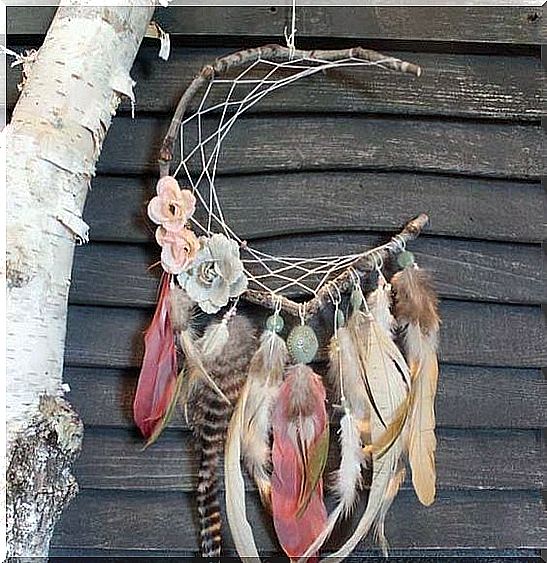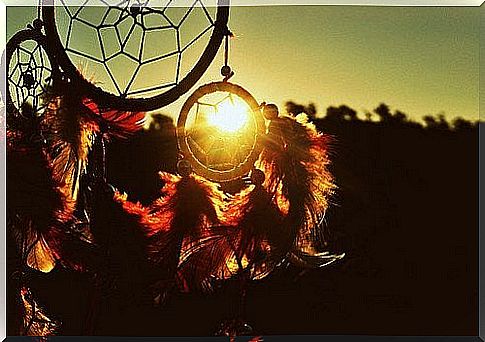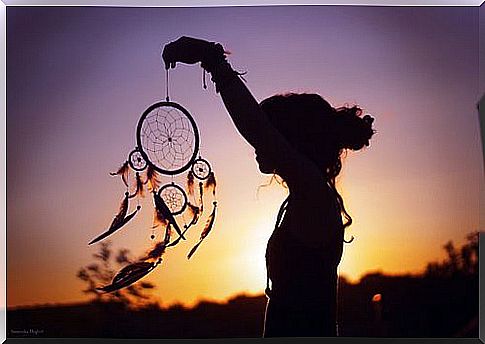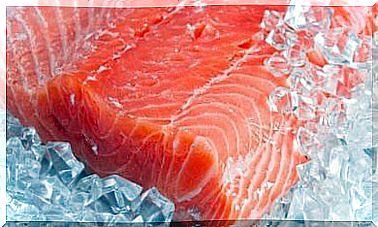The Curious Origin Of “dream Catchers”
Do you know the origin of dream catchers? Do you have any at the head of your bed, at the entrance of your house or in a window? We love to see them suspended around us. According to legend, dream catchers allow us to filter our dream world.
They channel positive emotions to contain everything negative, that is, all the nightmares that we have during the night. It is a popular belief sustained in an interesting myth that we invite you today to meet with us.
The origin of dream catchers: the people of the Ojibwa
The origin of the dreamcatcher must be found in a Native American people. They, throughout the 60s, began to popularize these objects, made by hand to sell to tourists in their reserves. Beautiful artisan tributes that were part of their culture and tradition.

The Ojibwa are originally from North America, and it is common to find settlements in the Ontario, Wisconsin and Minnesota area. To make them they used nettle fibers tied to a kind of circular or teardrop-shaped ring. In it they made a web like a spider web.
They also used willow wood and, in general, the dream catchers had a not very large diameter, about 10 centimeters. They marketed them under the idea that, thanks to them, people could avoid nightmares and ward off bad energies and evil spirits.
As a curiosity, we will tell you that there were many native tribes who criticized the Ojibwa for selling those objects. They said that doing so lost the true mystical and spiritual value of dream catchers, since tourists acquired them solely for aesthetic reasons.
Despite criticism, dream catchers were one of the best-selling objects in America throughout the 1960s . They even reached the whole world en masse.
The purpose of dream catchers

Dream catchers should be hung at the head of beds or over children’s cribs. Its purpose is to banish nightmares or those evil visions that people have from time to time.
For the Ojibwa, these objects filter our night’s rest. Thus, while we sleep, nightmares or bad feelings are trapped in the central spider web. Meanwhile, good dreams and positive feelings descend through the lower feathers, to flow to us.
When dawn comes, the warm lights of the sun make the nightmares fade and disappear forever from our dream catcher. Nice, isn’t it?
The legend of dream catchers
In addition, this tradition of dream catchers was based, for the Ojibwa, on a beautiful legend. Its central figure was a beautiful woman named Asibikaashi. It is also known as the “spider woman.” But far from having a negative connotation, what this lady did was take care of every creature in our world.
She leaned over in the crib or on the bed of small children to weave an invisible web, a fine and delicate fabric capable of reaching any nightmare and making it disappear. Nothing bad can happen to that creature if Asibikaashi is with her.
All the negative remains attached to their networks, just until dawn, when the morning brightness renews all the good, and later the bad fades. Beautiful, there is no doubt.
The legend of the Lakota

But there is a second version of how dream catchers work. The Lakota people have another explanation that you are surely interested in knowing.
According to them, nightmares and negative energies pass through the network until they disappear. Meanwhile, the good dreams are trapped in the center to slide gently down the feathers. Thus they come to us and surround us with a placid rest. The bad goes away and the good catches up.
Now tell us, did you know the origin of dream catchers? Do you also have one at home? They are, without a doubt, a beautiful tradition. We cannot be sure if they truly drive away bad energies or not, but whatever it is, it is always nice to have them with us.
It is worth taking into account the origin of its tradition and its history. This is one way of doing our little tribute to these tribes whose legacies we can continue to keep alive. It does not matter what colors they have or their shapes: it will always be nice to have them around.









